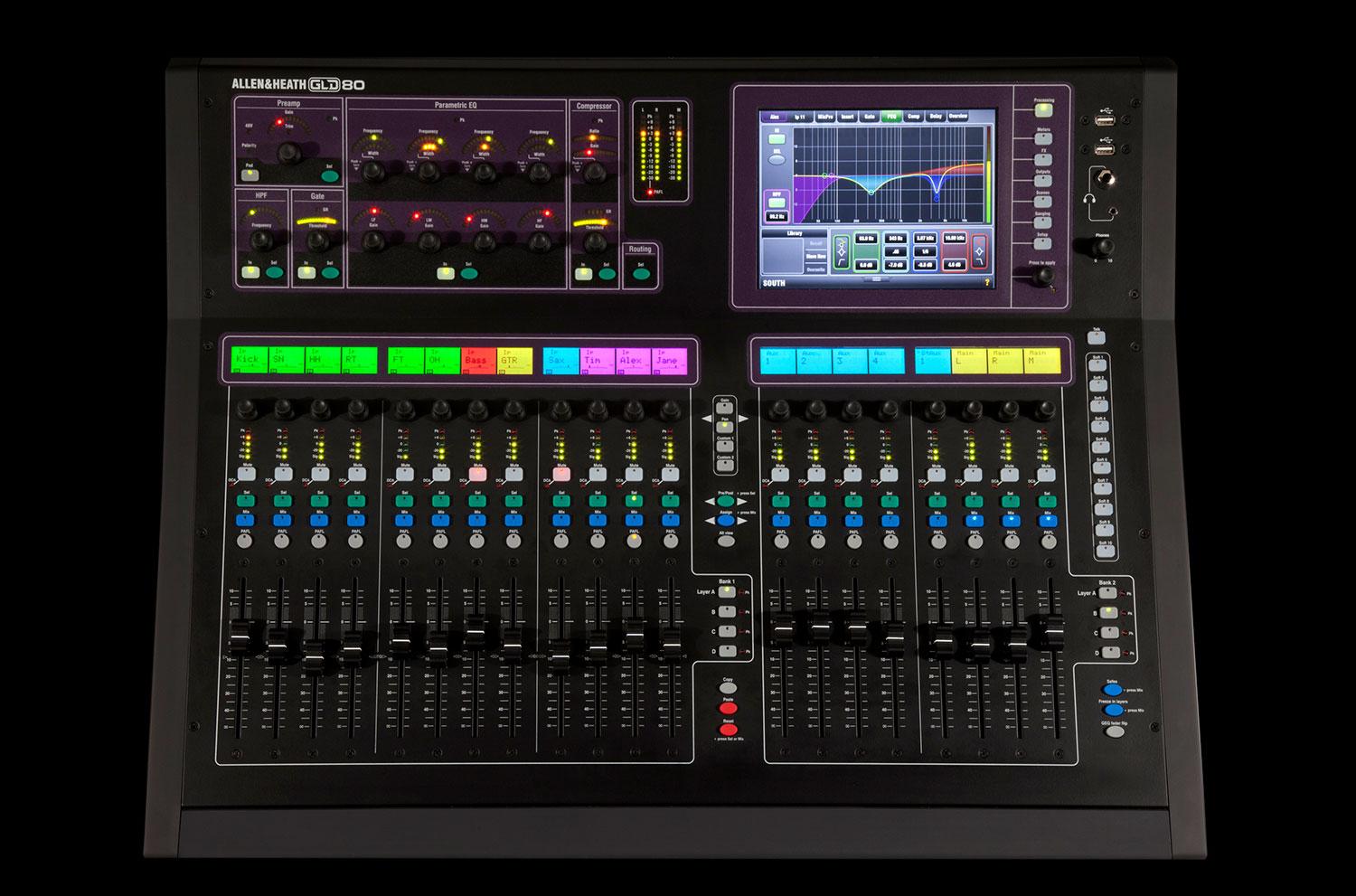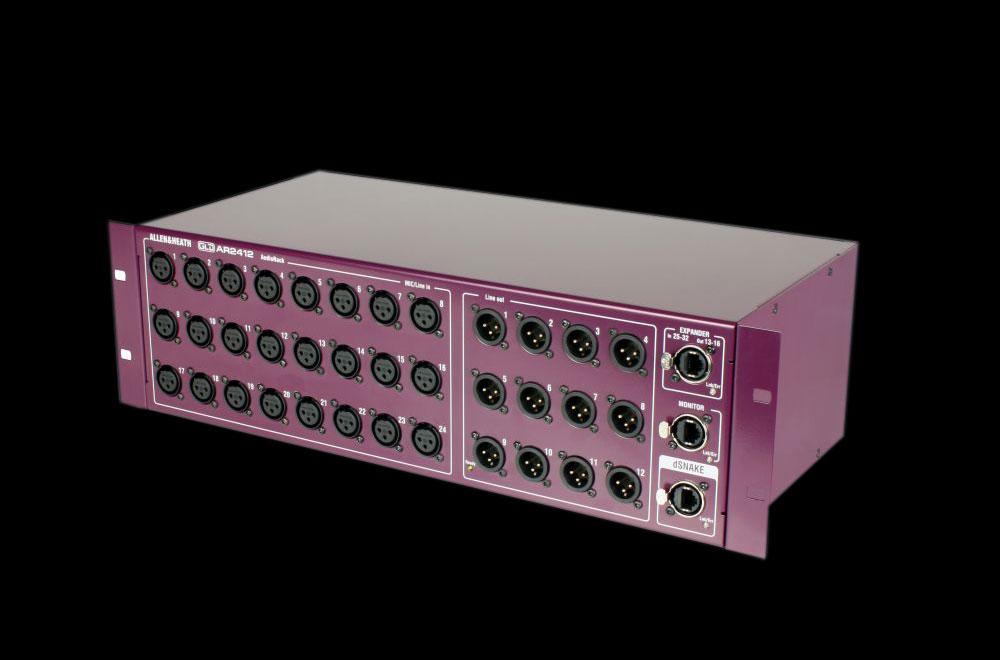 You won’t see Brad Wager on stage, but a concert wouldn’t sound the same without him. While the guys on stage playing instruments get all the spotlight, Wager sits in back, undisturbed, working buttons, dials and faders instead of strings, keys and drum pedals. He’s a sound engineer – the guy who makes a live concert sound like a live concert, rather than a bunch of musicians busking in a subway station.
You won’t see Brad Wager on stage, but a concert wouldn’t sound the same without him. While the guys on stage playing instruments get all the spotlight, Wager sits in back, undisturbed, working buttons, dials and faders instead of strings, keys and drum pedals. He’s a sound engineer – the guy who makes a live concert sound like a live concert, rather than a bunch of musicians busking in a subway station.
While the tools of his trade have remained unchanged for decades, Wager’s cutting-edge gear includes some surprisingly familiar additions that make him more flexible than ever.
Ask any musician Wager has worked with (this writer included) and they’re likely to tell you they like the new system and wish more sound engineers used it.
“We’re in a bass trap. We’re in a horrible acoustic space up here,” Wager laments. “In a perfect world, I would be at floor level where the rest of the people listening to the mix are, and I’d be a little off-center. And that’s absolutely never an option.”
But then he whips out an iPad and flashes a smile like he’s got the entire room in the palm of his hands. In a way, he does. He moves a virtual slider on his iPad and, behind him, the mixing console moves in perfect unison.
“[This system] puts you wherever you want to be,” Wager explains. “If the trouble spot is the table in the corner, you can go to the table in the corner and see what they’re dealing with over there.”
This is what the future of live music looks like: Orchestrated from the same device your parents use to read the morning paper.
The ears behind the scenes
Unless you’re a sound technician, stage manager or musician, chances are you’ve only seen a fraction of what’s involved in making a live concert sound great. Those giant speakers you see sitting to the left and right of the musicians are just the last stop on a long, complicated journey from the microphones to your ear. In between lay miles upon miles of wires and cables, thousands of pounds of electronics and, smack in the middle of it all, at least one very frazzled sound engineer. It’s been that way for several decades. But today, advances in technology are finally changing the way live sound is done and, believe it or not, we have the iPad to thank for the revolution.

Live performances revolve around the mixing console. This complex board of ins, outs, buttons and dials is, more often than not, nowhere near the stage. Instead, central command gets placed in a dark corner or cubby somewhere in the back of the room where nobody can see it. While this is great for the “Wizard of Oz” effect needed to pull off a great show, it means that all the sound signals have to travel some long distances; and that means cables – lots and lots of cables.
Those cables travel through a “snake,” which is essentially one big, thick cable with lots of smaller cables inside it. That snake has to be routed across the room in a way that doesn’t get people tripping over it and spilling their cocktails on the floor – a considerable challenge on its own.
Brad Wager represents a growing number of tech-savvy sound professionals who … don’t see the iPad as a toy, they see it as a powerful tool.
Once all of the gear has been set up, the mixing console becomes an anchor. An engineer will spend his or her time running back and forth between the stage and a mixing console to hear how various tweaks affect the sound at audience level. And since what the mix sounds like in that dark corner is nothing like the way it sounds to the other 96 percent of the room, the engineer ends up running all through the room as well, which is both invasive and a hassle.
Besides the audience, an engineer needs to attend to the musicians, who rely on monitors – small speakers – to hear their instruments. If any of them need adjustment during the show, the engineer must either try to interpret a convoluted mess of hand signals, or run up to the stage and … you know … talk with the person. Then they run back, make an adjustment, and ultimately run back up to the stage to see if what they did worked. And that’s just one instance; this dance can go on all night long.
But now it doesn’t have to.
The new school
At 29 years old, Wager already has 10 years of hard-earned professional sound engineering experience under his belt. And, as anyone who has worked with him will tell you, he is one of the best at what he does in the Pacific Northwest. Part of what makes him successful is his keen ear, but he also brings a fresh perspective, an open mind and some new tools into an industry which hasn’t seen much in the way of technological innovation for a long time.
The most recognizable of those gadgets is an iPad, which gives Wager a graphic representation of everything on his console. With it, Brad can move sliders, rotate dials, combine channels, add effects and trigger recordings…you name it. The device connects to the console through your basic Wi-Fi router, and in doing so allows the user to manipulate the entire system from anywhere within wireless range. So, Wager can hit the bar and grab a beer while turning up the lead singer’s monitor. Or, if he’s got to hit the head, he can do so without worrying the band might wrap up the set suddenly without his being there to kill the microphones and queue some house music. More practically, he can set the system up so that the bartender or an emcee can take care of things during smaller shows.

The iPad gives Wager freedom – freedom from being tied down to one location and freedom from several hundred pounds of back-breaking bulk. But while it is a critical component of Wager’s next-generation live sound system, it is only one of several new pieces of technology that make his job easier and more effective.
For this show, Wager is using an Allen & Heath GLD-80 Digital Mixing Console with an Allen & Heath AR2412 digital snake module. To put things in perspective, the console at work weighs just 36lbs and could fit on a nightstand. The analog equivalent weighs 132 lbs. and would hang off the end of even a generous-size coffee table.
That’s just the console. Wager says that if he used one of those old-school “snakes” we mentioned earlier, it would weigh in at 324 lbs. The module that lets him use CAT5 cable instead – the same stuff you use to connect your router to your Wi-Fi hotspot. “Cat 5 reel is so easy to handle. You unroll as you go (only as much as you need), take [it] up into a scissorlift and fly over a ballroom floor in the airwall, track etc. It’s just plain awesome stuff. And, it’s cheap.”
If you’re keeping up with the math, those two digital components save Wager 400 lbs. worth of work almost every day. But the drastic difference in size and weight only tell part of the story.
- 1. Allen and Heath GLD 80 Digital Mixing Console
- 2. Allen and Heath AR2412 Digital Snake Module
“The thought of having to accurately patch, troubleshoot and operate multiple racks of analog gear is completely unpractical and ridiculous,” Wager says. Digital consoles, he says, easily and seamlessly allow users to access an unbelievable array of processing in about half the space of their analog counterparts, and at 100lbs less.
All the cool kids are doing it…
What some folks consider no more than big boy-toys could actually transform an industry that has more or less sat stagnant for decades. Sure, Wager knows how to handle all the classic tools of the trade, but when he heard that there were professional live sound systems that would replace most of that mess and almost all of the hassle he’d been dealing with for the past nine years, he jumped right on it.
So if this fancy new digital gear is so great –and it very clearly is – then why isn’t everyone doing this? Why in the world would you choose to stick with heavy, cumbersome, inconvenient and inefficient equipment? According to Wager, there are several common excuses, but few actual reasons.
“The only remaining hesitation I can see in moving forward is the classic fear of new technology,” says Wager.
“Cost used to be a factor … but that’s not so much the case anymore. When we founded this company … I was sick of hauling heavy processing racks up the stairs at the club. Also, our clients always seem to want to do some form of recording. So for us, the then fairly new Presonus Studiolive 24.4.2 console was an obvious choice. At the time, it had a MAP price of $3299, provided more processing than any analog system that I could put together for that amount of money, would record multi-track or ‘two-track’ and fit in the trunk of my car! To boot, it could be run wirelessly from an iPad – a total breakthrough at that price-point. With the introduction of that product, the floodgates opened. Other manufacturers scrambled to offer the power, simplicity, wireless control, recording, etc., all at dropping price points. Many new consoles have come out since then from a multitude of manufacturers. So price, in my opinion…isn’t really a reasonable excuse.”
Wager also conceded that, since the technology is relatively new, it hasn’t been “road tested” as extensively as some might like. But, he points out, “How do you prove a negative? In all fairness, operating an expensive, computer-based system (most with moving parts) out in a dusty field, loaded in an out of a truck, in the hot sun, frigid cold, wind, rain, humidity, etc., is a legitimate cause for concern for it’s reliability – these are tough working conditions. Time will tell, but I haven’t personally experienced any issues or quirks in the field that would send me running back into the dark ages.”

That leaves just one more likely possibility: fear of change. “The only remaining hesitation I can see in moving forward is the classic fear of new technology,” says Wager. “Though many of these systems are very intuitive and quick to learn, they can also be complex and difficult for an inexperienced user. I don’t know … maybe they’re thinking, ‘if it ain’t broke don’t fix it’?
Everyone wins
Ask any musician Wager has worked with (this writer included) and they’re likely to tell you they like the new system and wish more sound engineers used it. Fortunately, Brad Wager represents a growing number of tech-savvy sound professionals who aren’t intimidated by change. These engineers don’t see the iPad as a toy, they see it as a powerful tool. And as a result of this open-minded perspective, they are facilitating a fundamental shift in how we hear live music. Eventually, this approach to live sound will be commonplace. But long after the novelty has worn off, we’ll still be reaping the benefits.





